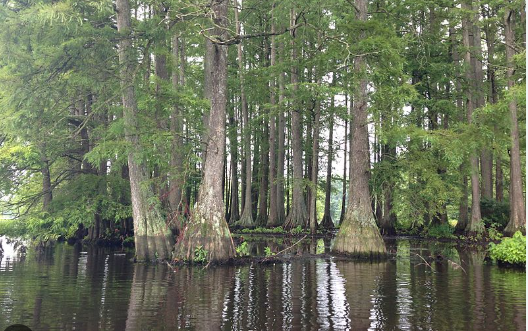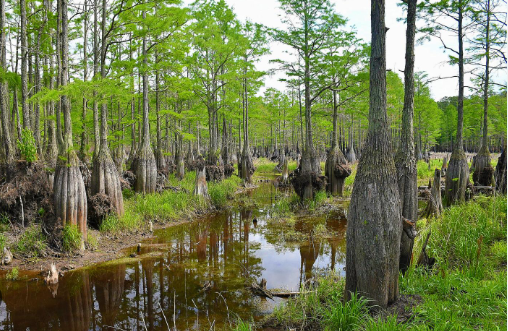The pond cypress, Taxodium ascendens, is a unique type of cypress, deciduous in nature and native to North America, specifically found in the southeastern United States, from as far north as Delaware and Virginia to Florida and west to Louisiana. It is closely associated with the Everglades. Unlike most conifers that stay evergreen, the pond cypress is a deciduous trickster. It sheds its bright green, needle-like leaves every fall, putting on a dazzling display of orange, brown, and gold foliage before going bare for winter.
This tree can grow well in both wet and dry conditions. The trunk is expanded at the base, even on young trees, assisting the tree in anchoring in soft, muddy soil. The leaves of the Pond Cypress are more needle-shaped and are arranged in a spiral pattern that stays close to the stem, distinguishing it from other cypress species. These leaves are deciduous, turning an attractive light brown in fall before dropping. The tree also produces cones that are smaller than those of the bald cypress, not exceeding 2.5 cm in diameter.
The bark of the Pond Cypress is coarser and thicker than that of its cousin, the bald cypress. The bark is usually of a paler gray color. Like bald cypresses, pond cypresses growing in water have a characteristic growth trait called cypress knees; these are woody projections (pneumatophores) sent above the water from the roots, probably enabling this plant to breathe air in habitat with waterlogged soil. Maximum longevity of this plant is estimated at 1,000 years.
Pond Cypress trees are considered fast growers, especially when young. They can grow up to 2-3 feet per year in ideal conditions. Their growth rate may slow down as they mature, but they can still continue to grow for centuries. There is some debate about the origin of the Pond Cypress. Some botanists classify it as a distinct species, while others consider it a variety of the Bald Cypress (Taxodium distichum).
Unlike its sprawling bald cypress cousin, the pond cypress has a more upright and symmetrical branching pattern. The branches tend to grow at right angles to the main trunk, creating a narrowly conical or columnar shape.

Other Characteristics
- The bright green, needle-like leaves turn a beautiful orange, brown, or gold before dropping in the autumn.
- They are fast growers, especially when young. They can grow up to 2-3 feet per year in ideal conditions. Their growth rate may slow down as they mature.
- Has a strong root system that makes it resistant to wind damage.
- They develop “knees” from their roots. These structures are thought to help aerate the roots in waterlogged soils.
- It is a long-lived tree, with some specimens reaching ages of over 1,000 years.
- They are cold-hardy and able to thrive in USDA hardiness zones 5 to 9.
- As the tree matures, it becomes deeply furrowed with vertical ridges and grooves.
- Has a more upright and symmetrical branching pattern.
Habitat

Pond cypress occurs naturally in shallow ponds, lake margins, swamps and wetlands. It prefers wet, poorly drained and acidic soils, at an altitude of 0–30 meters above sea level. The pond cypress preferred habitat is along the banks of ponds and lakes where the water is stagnant. This tree is native to southern swamps, bayous and rivers, and is known to tolerate extended periods of intense flooding.
Pond cypress are most frequently found in isolated depressions fed by nutrient poor, shallow ground water. Taxodium ascendens grows easily in average, medium to wet, moisture-retentive but reasonably well-drained soils in full sun. It prefers moist, acidic, sandy soils, but tolerates a wide range of soil conditions ranging from average moisture soils to wet soils in standing water.